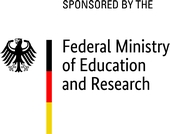TP5
Generation of RASopathy patient-specific induced pluripotent stem cells (iPSCs) and in vitro analysis of myocardial genotype-phenotype-correlations
By employing state-of-the art stem cell technologies and genome editing approaches, this subproject aims at providing a broad spectrum of RASopathy patient-specific iPSC lines and transgenic cell lines for in vitro disease modelling. Other subprojects of the GeNeRARe consortium will use these cellular tools to elucidate impacts of the respective mutation in organotypic cells like cardiomyocytes and neurons. Genotypte-phenotype-correlations will be identified by the use of gene-corrected isogenic control iPSC lines.
The lab of George Kensah, an expert in the field of iPSC research and myocardial tissue engineering, will use patient-specific iPSC-derived cardiomyocytes to generate miniaturized three-dimensional cardiac tissue (BCT) as a means to analyze structural, bioenergetic, functional and biochemical genotype-phenotype correlations of RASopathy-associated cardiomyopathies. Special focus will lie on mutations in the RIT1, SOS1, RAF1 and PTPN11 genes, where the exact pathomechanisms underlying dysfunctional myocardium are still not fully understood. Furthermore, initial phenotype rescue attempts will be done by application of small molecular modulators of affected components of the RAS-MAPK signaling pathway.
Major goals:
- Establishment of RASopathy patient-specific iPSC lines and the correction of the mutated genes using CRISPR/Cas9 technology to provide isogeneic controls.
- Generation of modified iPSC lines to trace intracellular calcium handling via GCaMP and to stimulate maturation by optogenetics in patient-derived cardiomyocytes.
- Provide members of the GeNeRARe consortium with modified and unmodified RASopathy iPSC lines.
- Assess pathomechanisms of RASopathy-associated cardiomyopathies by employing means of three-dimensional myocardial tissue engineering.
- Identify novel targets for pharmaceutical interventions.
Publications:
- G. Kensah, I. Gruh, J. Viering, H. Schumann, J. Dahlmann, H. Meyer, D. Skvorc, A. Bär, P. Akhyari, A. Heisterkamp, A. Haverich, and U. Martin, “A Novel Miniaturized Multimodal Bioreactor for Continuous In Situ Assessment of Bioartificial Cardiac Tissue During Stimulation and Maturation,” Tissue Engineering Part C: Methods, vol. 17, no. 4, pp. 463–473, Apr. 2011. PMID: 21142417
- G. Kensah, A. R. Lara, J. Dahlmann, R. Zweigerdt, K. Schwanke, J. Hegermann, D. Skvorc, A. Gawol, A. Azizian, S. Wagner, L. S. Maier, A. Krause, G. Dräger, M. Ochs, A. Haverich, I. Gruh, and U. Martin, “Murine and human pluripotent stem cell-derived cardiac bodies form contractile myocardial tissue in vitro.” European Heart Journal, vol. 34, no. 15, pp. ehs349–1146, Oct. 2012. PMID: 23103664
- N. Lachmann, C. Happle, M. Ackermann, D. Lüttge, M. Wetzke, S. Merkert, M. Hetzel, G. Kensah, M. Jara-Avaca, A. Mucci, J. Skuljec, A.-M. Dittrich, N. Pfaff, S. Brennig, A. Schambach, D. Steinemann, G. Göhring, T. Cantz, U. Martin, N. Schwerk, G. Hansen, and T. Moritz, “Gene Correction of Human Induced Pluripotent Stem Cells Repairs the Cellular Phenotype in Pulmonary Alveolar Proteinosis.” American Journal of Respiratory and Critical Care Medicine, p. 131126070906004, Nov. 2013. PMID: 24279725








